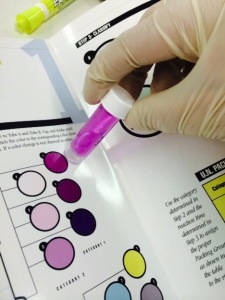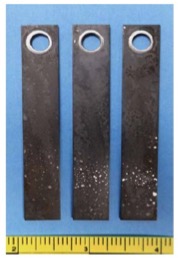Low Cost and Fast Turnaround on Packing Group Determination
To legally ship corrosive materials, it’s critical to first evaluate the corrosivity of the materials and select the proper UN GHS packing group. G2MT Labs is one of the only labs to offer both skin and metal corrosion testing to satisfy the UN Globally Harmonized System (GHS) and many similar requirements (e.g. US DOT, US EPA, etc.).
Metal and Skin Corrosion Testing
For skin corrosion assessment to determine packing group, the Corrositex test is a internationally recognized standard that satisfies the UN Globally Harmonized System (GHS) for classifying skin corrosivity. We offer the Corrositex system, rather than any competing methods, because it is
- (1) fast,
- (2) quantitative,
- (3) reproducible, and
- (4) a safer and less cruel alternative than animal testing.
And we complement the Corrositex analysis with the ASTM G31 immersion corrosion test for metals, one of the most commonly used corrosion tests worldwide. We have the required samples (aluminum and steel), equipment, and personnel ready to provide you results quickly.
For high-quality testing, competitive pricing, and expertise to assist you after testing, G2MT Labs is the right choice.
Skin Testing for Packing Group Assessment for UN GHS, US DOT/EPA, and OECD
For Packing Group determination of Class 8 Materials, skin testing is performed by a safe, cruelty-free method known as Corrositex that uses a simulated skin barrier to evaluate the penetration time of the material. A glass bottle filled with chemical detection fluid is capped with a synthetic biobarrier, and the corrosive solution is placed on top of the biobarrier. When the substance penetrates the barrier, the detection fluid changes color.
The time of penetration of the samples is recorded, allowing them to be grouped into Packing Group 1, 2, or 3 for US DOT and/or EPA compliance, internal use, or for marketing purposes.
Metals Corrosion Testing by ASTM G31 Immersion Testing for DOT, UN, and OECD Requirements
For metal corrosion analysis, the ASTM G31 method is used for the metals corrosion testing performed by G2MT Laboratories. Samples are typically tested for 48 hours at a 55 Degrees Celsius in a special corrosion apparatus designed for these tests. The weight change is measured and the results allow determination of the proper packing group, and also provide a good estimate of the expected corrosion rate of the materials in SAE 1020 steel and 7075-T6 aluminum container materials.
Additional Packing Group Determination and Testing Resources:
Regulatory Acceptance of Corrositex Testing
Many government agencies accept Corrositex testing, and the list keep growing:
- Department of Transportation – DOT-E 10904
- Original exemption granted April 28, 1993
- DOT Permit #10904, 12/10/2013 expiring 11/30/2017
- Download DOT Permit #10904-(PDF)
- Consumer Product Safety Commission (CPSC)
- Formal Acceptance, NIEHS press release dated 3/21/00
- European Centre for the Validation of Alternative Methods (ECVAM)
- 12/2002
- EU/OECD
- Approval July 19, 2006
- EPA Federal Register / Vol. 60, No. 142 Dermal Corrosion
- Method 1120 June 13, 1997
- Formal Acceptance,NIEHS press release dated 3/21/00
- Food & Drug Administration (FDA)
- Formal Acceptance, NIEHS press release dated 3/21/00
- International Air Transportation Association (IATA)
- Letter of acceptance dated December 17, 1993
- National Institute of Environmental Health Sciences (NIEHS)
- Endorsement dated 6/22/99
- Occupational Safety and Health Administration (OSHA)
- Letter of Interpretation dated March 3, 1994
- Formal Acceptance, NIEHS press release dated 3/21/00
- Transport Canada – Permit For Equivalent Level of Safety SU 4483
- Original approval 8/14/96
- Additional renewal 9/18/98
- Additional renewal 1/15/01
Full Draize Replacement Acceptance 3/5/02 - United Nations – Globally Harmonized System of Classification
- United Nations (UN) (2013). Globally Harmonized System of Classification and Labeling of Chemicals (GHS). Fifth revised edition, UN New York and Geneva, 2013. Ch 3.2.

